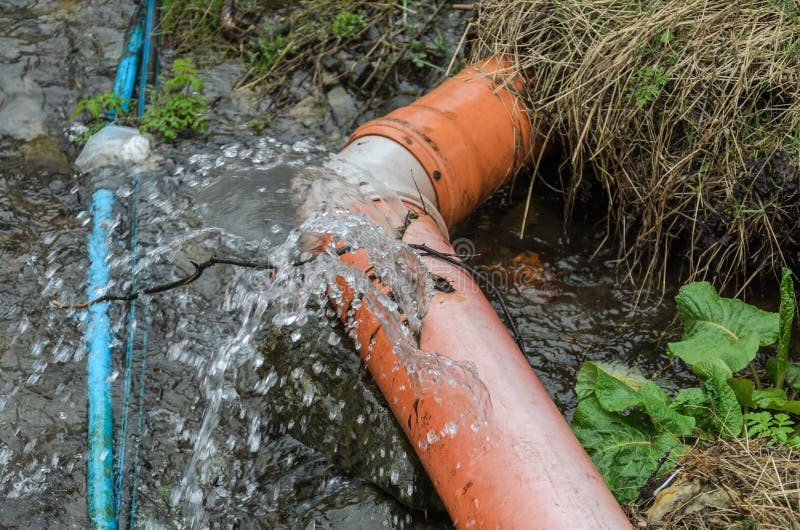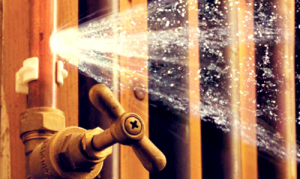How to Handle a Burst Pipe
How to Handle a Burst Pipe
Blog Article
The article in the next paragraphs in relation to What to Do When a Pipe Bursts in Your Home is quite intriguing. Have a go and draw your own final thoughts.

The instant response when a pipe bursts in your building is to enter full panic setting. Don't worry; you are not the only one as a lot of property owners feel by doing this, too. Besides, this problem can cause significant home damages.
Though it might be difficult to do, stay calm and accumulated. Making hasty choices can make the situation even worse. To help you out, here are six immediate steps you have to take when dealing with ruptured pipes. Keep in mind, knowledge is power so researching this prior to it takes place will permit you to stay in control also amid a substantial emergency water leak:
Conduct a Quick Visual Assessment
Though your reaction is to shut down the shutoff right away, pause for a while and conduct a quick aesthetic evaluation of the site. Try and also find where the water is leaking from. Doing so will certainly permit you to encourage the plumber on what area to look at. This less-than-a-minute examination will certainly save you time as well as help your plumber rapidly identify the origin.
Shut the Main Water Valve
After a fast scan, you can currently shut off the major water system. Keeping water running will result in large damage. The last thing you require is significant flooding warps wood floors or ruins appliances and furnishings. You also wish to stay clear of mold and mildew growth. Shut off the shutoff and also call the plumber for an emergency evaluation.
Drain the Pipe
As you await the plumber to arrive, drain the water flowing in the pipes. Just run your tap and also purge the toilet to ensure that whatever water is staying will completely flow out. When you do this, the leak will quit going where it's not intended to be to begin with. With that said, the plumber can likewise work faster. Simply don't forget to shut down the tap after the pipes are drained pipes.
Attempt a DIY Pipeline Fixing
If you've obtained handyman skills, do a small repair work like sealing off a little split. You can purchase piping sealer to make quick fixes. Be cautious with the application, so you don't aggravate any troubles. If you need to tighten up a few nuts as well as screws, resist need to over-tighten as this can cause leaks down the line.
Do away with Any Type Of Standing Water
Do not allow any type of standing water sit for also. It will certainly lead to more damage if water leaks right into your floors or rug. You also do not desire it to flow right into vital things like electronics. Tidy up the water and completely dry the area off promptly. If you have electric fans, maintain them running to distribute the air as well as promote much faster drying out.
Call a Trustworthy Plumber
If you really feel uncertain regarding your abilities to fix a small split or tiny leak, it is best to call an expert plumber. When it involves fixings, they have the knowledge, skills, devices, as well as experience to get things done fast. Tinkering with pipes is not a joke as it can cause even more problems if done incorrectly. Finding a trustworthy plumbing solution guarantees your water leak is repaired successfully as well as efficiently.
A Frozen Pipe Has Burst, What Are The Next Steps?
How to Tell if Pipes are Frozen
It’s important to catch frozen pipes early to prevent damages. Typically, you will be able to boost your thermostat or talk a professional plumber before any damage occurs. However, here are a few signs that will help you identify if your pipe is frozen.
No Water – An obvious sign that you have frozen pipes is if there’s a complete lack of water coming from your faucets or fixtures. Frost – If you can gain access to view your pipes, check to see if there is visible frost on them. Take note of which parts of the pipe has frost. Smell – If your pipes freezes, it will block food and waste down your drain, causing a backup and your room to begin to have a bad smell. How to Tell if a Frozen Pipe has Burst
Inspect the Inside of the Building. Go through each area of the building and look for actively dripping water and signs of water damage. Examine any exposed pipes and check them for frost or condensation. Especially keep an eye on rooms such as bathrooms, kitchens, laundry rooms, and unheated areas of the building. Turn on the faucets and flush your toilets. Ensure they are working and the water has no discoloration or smell to it. If there is only a slow trickle of water coming out, or no water at all, this might mean a frozen pipe has burst. Check your water meter. If all fixtures in the building are off and it still shows movement, this could be a sign of a burst. Check the exterior of the building. Look for water building up anywhere out of the ordinary, or sinkholes in your yard. Remove Water Right Away
It is important to clean up water right away to prevent mildew and mold buildup. You will need towels, buckets, mops, and a wet/dry vacuum. Do not wait for the plumber to remove the water for you, the longer you wait the more likely it is that you’ll get mold or severe water damage.
Avoid Extreme Temperatures
First off, make sure the temperature in your home is no lower than 55*F. If you are going to be gone for a long time, turn off your water with the shut off valve to prevent freezing and bursting.
Don’t Leave Still Water in Pipes
When the weather gets too cold, you should let water drip from your faucet. While the dripping might be irritating, this will help prevent water from freezing. You can detect a frozen pipe if the faucet stops working, or the toilet doesn’t refill.
Taking Precautions with Frozen Pipe Damage
A burst pipe is one of the most common issues people face at home. There can be a number of reasons why pipes burst in harsh climate conditions such as extremely cold temperatures. Low to freezing temperatures can freeze the pipes, causing there to be frozen pipe damage and leading them to burst. Regardless of the type of pipes – whether they be metal or plastic, they can still expand or burst and cause water damage to your home. A burst pipe also requires a significant amount of costs in repairs. This is why it’s important to take all the safety measures to prevent pipes from bursting.
Below are some frequently asked questions and helpful steps to take to safely solve any problems you may be experiencing with your pipes at home.
What to Do When a Pipe Bursts:
Turn off the main water supply Contact a professional Quickly remove and clean excess water to avoid further water damage. Take pressure off pipes by draining the faucets Circulate warm air in your home to slowly thaw pipes Use a repair sleeve to temporarily cover the damaged area of the pipe https://jenkinsrestorations.com/frozen-pipe-has-burst-whats-next/

As a passionate reader about 6 Basic Steps to Stop a Burst Pipe from Getting Out of Control, I think sharing that blog post was worth the trouble. Do you know about another person who is intrigued by the subject? Take a moment to share it. Thank you for your time. Don't forget to check up our website back soon.
Plumbing woes? Connect. Report this page